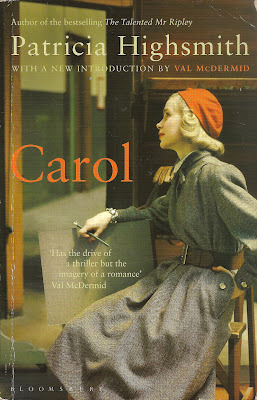Buy this from Bookshop.org to support local bookstores and the Lesbrary! I’m embarrassed to admit I only just read this for the first time. I’ve read every other Malinda Lo book. I’ve had a copy since it first came out—in fact, I’ve owned two copies, because I also spent $100 on a signed hardcover (itRead More
Mo Springer reviews Last Night at the Telegraph Club by Malinda Lo
Amazon Affiliate Link | Bookshop.org Affiliate Link Lily Hu has always been at least somewhat aware of her attraction to women. But after seeing a lesbian novel in a store, a poster for a male impersonator, and her classmate Kath in the Telegraph Club, she knows she has to be honest with herself. However, thisRead More
Rachel reviews Last Night at the Telegraph Club by Malinda Lo
Amazon Affiliate Link | Bookshop.org Affiliate Link I read Malinda Lo’s newest book, Last Night at the Telegraph Club (2021) about a month ago, and I’m still thinking about it. If you’re looking for a slice of mid-twentieth-century lesbian culture with some wonderful Chinese American representation and rich social history, Last Night at the Telegraph Club is forRead More
Carolina reviews Last Night at the Telegraph Club by Malinda Lo
It seems apt to begin 2021, a time of reflection and introspection for many, with a YA novel that feels fresh and timeless at the same time. Malinda Lo’s new novel, Last Night at the Telegraph Club echoes with the same beats as my favorite “baby gay” first lesbian novels (e.g. Annie on My MindRead More
Danika reviews Goldie Vance: The Hocus Pocus Hoax by Lilliam Rivera
I already know and love the Goldie Vance comics, but now it is also a middle grade novel series! The premise is that Goldie Vance is a sixteen year old girl who works as a part-time valet, part-time detective at a resort her father manages. She is the assistant to the hotel’s detective–which is apparentlyRead More
Marthese reviews Lies We Tell Ourselves by Robin Talley
“We’re not allowed to touch any of them, no matter what they do to us” Lies We Tell Ourselves by Robin Talley was a difficult book to read, but an important one. While it is a fiction book, it is realistic; it could have happened. I found this book at the library. It hadn’t beenRead More
Danika reviews Pulp by Robin Talley
I have been anticipating this book for a long time. I collect lesbian pulp, and I’m fascinated by the history of this period of lesbian literature. Pulp is a YA novel from two perspectives: Abby, a modern day out and proud lesbian, and Janet, a 1950s teenager just discovering that she’s a lesbian, and what thatRead More
Marthese reviews Carol by Patricia Highsmith
”How would the world come to life? How would its salt come back?” Finally read this classic! Carol, originally published as The Price of Salt by Patricia Highsmith in 1952, was written in the late 40s, taking some inspiration from Patricia Highsmith’s real life and running away with it. The story is about Therese, a youngRead More
Allysse reviews The World Unseen by Shamim Sarif
The World Unseen is set in South Africa in the 1950’s and relates the story of two women – Miriam and Amina – and the way their lives impact each others. Let me start this review by saying that I love this book. After a lot of trouble to get it from my library IRead More
Guest Lesbrarian Orange Sorbet reviews Price of Salt by Patricia Highsmith
When this novel was published in 1952, it was Controversial with the Capital and thus, naturally, immensely popular. Patricia Highsmith – apparently a pretty renowned author but not a particularly likable personality – wrote it under the pseudonym “Claire Morgan” and denied having anything to do with the book until much later on in life,Read More


